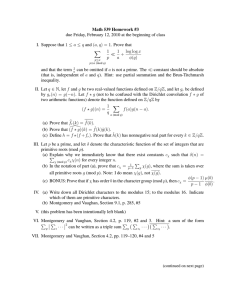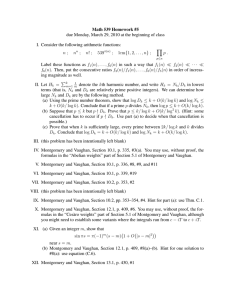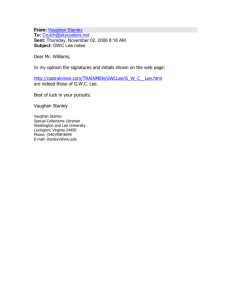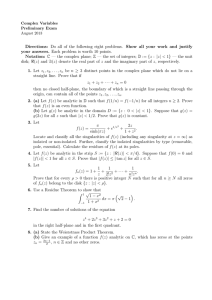Math 539 Homework #4 I. Show that if σ < σ
advertisement
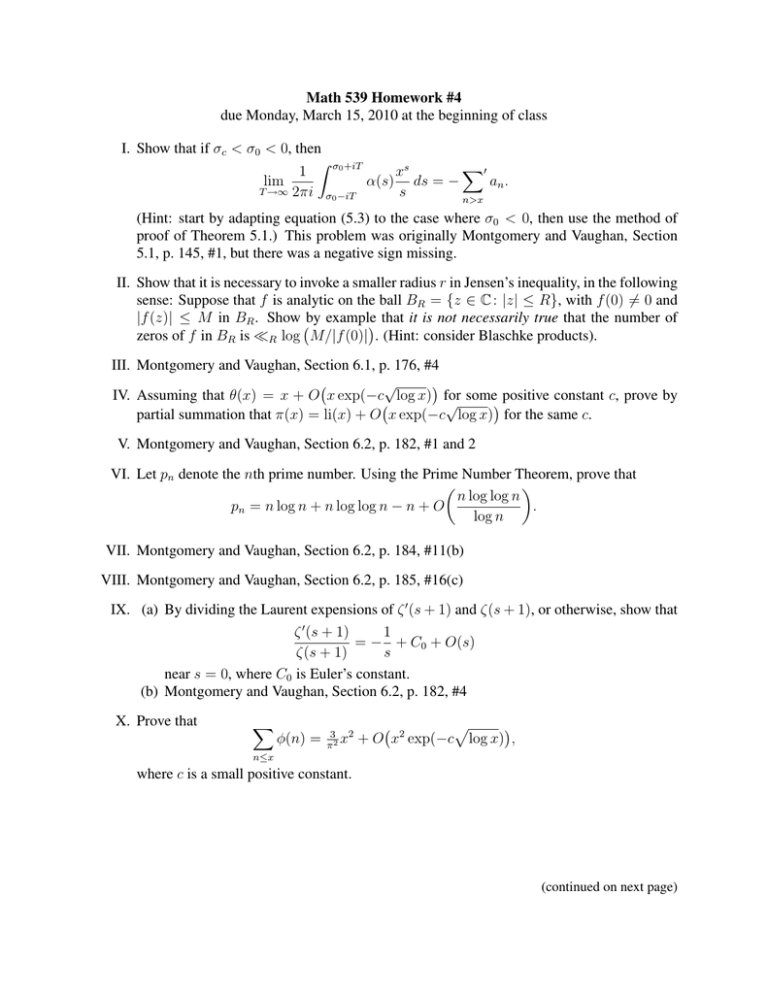
Math 539 Homework #4
due Monday, March 15, 2010 at the beginning of class
I. Show that if σc < σ0 < 0, then
Z σ0 +iT
X0
1
xs
α(s) ds = −
an .
lim
T →∞ 2πi σ −iT
s
0
n>x
(Hint: start by adapting equation (5.3) to the case where σ0 < 0, then use the method of
proof of Theorem 5.1.) This problem was originally Montgomery and Vaughan, Section
5.1, p. 145, #1, but there was a negative sign missing.
II. Show that it is necessary to invoke a smaller radius r in Jensen’s inequality, in the following
sense: Suppose that f is analytic on the ball BR = {z ∈ C : |z| ≤ R}, with f (0) 6= 0 and
|f (z)| ≤ M in BR . Show by example
that it is not necessarily true that the number of
zeros of f in BR is R log M/|f (0)| . (Hint: consider Blaschke products).
III. Montgomery and Vaughan, Section 6.1, p. 176, #4
√
IV. Assuming that θ(x) = x + O x exp(−c log x) for some positive constant c, prove by
√
partial summation that π(x) = li(x) + O x exp(−c log x) for the same c.
V. Montgomery and Vaughan, Section 6.2, p. 182, #1 and 2
VI. Let pn denote the nth prime number. Using the Prime Number Theorem, prove that
n log log n
.
pn = n log n + n log log n − n + O
log n
VII. Montgomery and Vaughan, Section 6.2, p. 184, #11(b)
VIII. Montgomery and Vaughan, Section 6.2, p. 185, #16(c)
IX. (a) By dividing the Laurent expensions of ζ 0 (s + 1) and ζ(s + 1), or otherwise, show that
1
ζ 0 (s + 1)
= − + C0 + O(s)
ζ(s + 1)
s
near s = 0, where C0 is Euler’s constant.
(b) Montgomery and Vaughan, Section 6.2, p. 182, #4
X. Prove that
X
φ(n) =
3 2
x
π2
p
+ O x2 exp(−c log x) ,
n≤x
where c is a small positive constant.
(continued on next page)
XI. Let k ≥ 2 be an integer, and let dk (n) be the generalized divisor function (so that d2 = d).
Give a heuristic argument that there exists a polynomial Pk (x) with real coefficients, of
degree k − 1 with leading coefficient 1/(k − 1)!, such that
X
dk (n) = xPk (log x) + o(x).
n≤x
(“Give a heuristic argument” means you can ignore all error terms along the way.)
P
−s
XII. Define F (s) = ∞
n=1 φ(n) .
(a) Show that F (s) is analytic on the right half-plane σ > 1.
(b) Show that F (s) = ζ(s)Q(s) for σ > 1, where where
Y
Q(s) =
1 + (p − 1)−s − p−s .
p
(c) Show that for any constant 0 < ε < 1, the product defining Q(s) converges to an
analytic function on the right half-plane σ ≥ ε that is uniformly bounded on that
half-plane.
(d) P
Let f (m) be the number of positive integers n such that φ(n) = m. Show that F (s) =
∞
−s
m=1 f (m)m .
(e) Give a heuristic argument that
ζ(2)ζ(3)
#{n ∈ N : φ(n) ≤ x} ∼
x.
ζ(6)
Why would part (c) of this problem be relevant if you were working through all the
details to make your heuristic argument rigorous?
